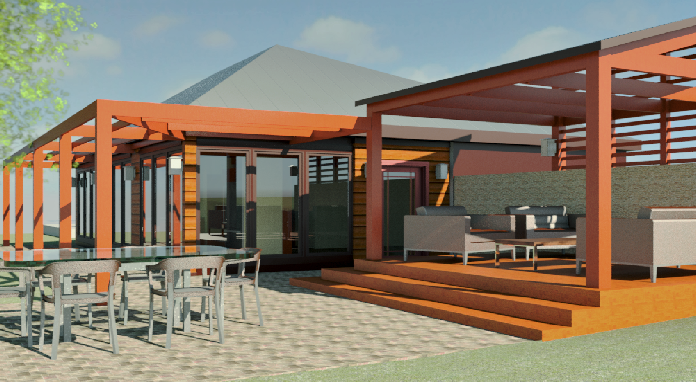






Everyone knows that insulation and air sealing provide a significant return on investment regarding energy savings, but they aren't exactly exciting items in which to sink your hard earned money. Solar panels are sexy and trendy but they are expensive and placing them on an energy-
Window placement has one of the biggest effects on your home's energy usage. Everyone loves large picture windows; they frame views, let in natural light, and add character to the house. However, they must be carefully thought out. A window that receives direct sunlight at noon in July will collect solar energy, convert it to heat, and warm the house up beyond what is comfortable. The air conditioner will crank on and waste energy trying to balance out the internal temperature. The homeowner will naturally react by closing the blinds. That sounds like a reasonable action, but then consider that you have just lost your view and your natural light. You will have to compensate by turning on the lamps, thus wasting energy by relying on artificial light instead of that provided for free by the sun. Those lamps convert electricity into visible light and heat, which adds to the load your AC will have to work to remove, thus wasting even more energy. You've just lost the whole point of your big, lovely windows.
There are several ways that a designer and homeowner can avoid this situation. Southern Iowa is located in Climate Zone 5 which is classified as a temperate region. The ideal building form for this climate is a rectangle with the long axis running east-
Overhangs and exterior sun shades, such as awnings, are very effective at controlling how the sun's light hits southern facing windows, and they can easily be built onto an existing house. The first step is to map the path of the sun through the sky at the latitude of your building site. It is critical to know the altitude and azimuth of the sun at the Summer Solstice, the Equinoxes, and the Winter Solstice. With this knowledge one can design shading devices and roof overhangs that will block the sun's light in the summer when it is located almost directly overhead while letting light shine into the interior in the winter when the sun angle is low. This method of control provides the best of both worlds: in the summer, direct sunlight is blocked from the windows. Instead, that sunlight bounces off the exterior ground surface and into the home, providing indirect, natural illumination without heat or glare. In the winter, the direct light provides passive heating.
A beautiful option for providing sunlight control that also adds value to the home is the pergola. Either free-
Overhangs, exterior sun shades, and pergolas work best on windows that face south. Experience has shown that large expanses of glass on the west facade, and to a lesser extent the east, lead to overheating: it is simply not possible to shield the extremely shallow angles of the rising and setting sun with horizontal shading devices. The low Winter sun angles also tend to cause the East and West sides to be colder than the south aspect of the building. Since windows have much lower insulation values than walls, it is best to avoid large expanses of glass here.
Trees are an excellent way to protect your home and provide sun control. Deciduous trees, such as oak and maple, are great at blocking summer sun while allowing the winter light in. The amount of shade provided by a tree depends on its orientation to the sun, the proximity to the building it is intended to protect, it's shape, spread, and height, and the density of its branches and foliage. Trees tend to be most useful for sun control when placed to the southeast and southwest of the house, blocking the early morning and late evening sun. Overhangs, awnings, and pergolas should be used provide protection from the high noon sun on south-
Conifers also make perfect windscreens. Intense winter winds can drive outside air through or behind the building insulation in a process known as Wind Washing. Wind Washing strips the heat from your home and lowers the effective R-
The good news is that awnings, pergolas, and trees not only improve energy performance but also add to a home's aesthetic appeal and value. They are fun things to spend money on. Play around with them; you may find that that your new pergola not only controls the sun in your living room but also provides the perfect spot for a new outdoor kitchen!
